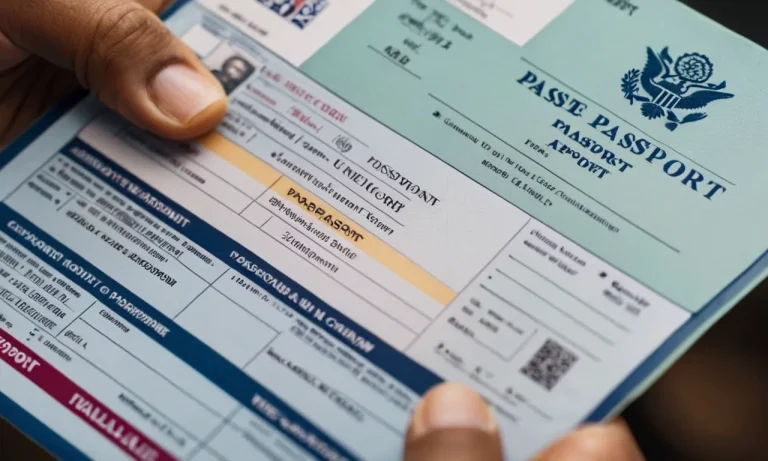Navigating the intricate world of academic performance can be a daunting task, especially when it comes to understanding the impact of dual enrollment on your high school GPA. As students strive to maximize their educational opportunities and gain a competitive edge, the question of whether taking college courses while still in high school can influence their grade point average becomes a critical consideration.
If you’re short on time, here’s a quick answer to your question: Yes, dual enrollment can affect your high school GPA, but the extent of the impact varies depending on the specific policies and practices of your school district and the college or university offering the dual enrollment courses.
In this comprehensive article, we’ll delve into the nuances of dual enrollment and its potential effects on your high school GPA. We’ll explore the factors that determine whether dual enrollment grades are factored into your overall GPA calculation, the potential benefits and drawbacks, and strategies to navigate this academic landscape successfully.
Understanding Dual Enrollment
What is Dual Enrollment?
Dual enrollment, also known as concurrent enrollment or dual credit, is a program that allows high school students to take college-level courses and earn credits simultaneously towards their high school diploma and a college degree.
This unique opportunity provides a head start on higher education, allowing students to experience the rigor of college coursework while still in the supportive environment of their high school. Dual enrollment programs are offered through partnerships between high schools and local colleges or universities, with courses often taught on the high school campus, online, or on the college campus itself.
Benefits of Dual Enrollment
The benefits of dual enrollment are numerous and far-reaching. Firstly, it offers a significant cost-saving opportunity for students and their families, as dual enrollment courses are typically offered at a discounted rate or even free of charge.
Additionally, by earning college credits early, students can potentially shorten the time required to complete a degree program, further reducing the overall cost of their education. Beyond the financial advantages, dual enrollment also exposes students to the academic rigors of college-level coursework, better preparing them for the transition to higher education.
According to a study by the Community College Research Center (https://ccrc.tc.columbia.edu/), dual enrollment students are more likely to persist in college and graduate on time.
Potential Challenges
While dual enrollment offers many benefits, it is not without its challenges. One potential concern is the increased workload and academic demands placed on students who are already juggling the responsibilities of high school coursework.
This can lead to stress and burnout if not managed effectively. Additionally, some students may struggle with the independence and self-discipline required for college-level coursework, especially if they are accustomed to a more structured high school environment.
Furthermore, ensuring the quality and alignment of dual enrollment courses with college-level standards can be a challenge for high schools and their partnering institutions. It is crucial for dual enrollment programs to maintain rigorous academic standards and provide adequate support and resources for students to succeed.
Dual Enrollment and High School GPA Policies
School District Policies
The policies regarding dual enrollment and its impact on high school GPA can vary significantly across different school districts. Some districts may choose to incorporate dual enrollment course grades into a student’s overall GPA calculation, while others may keep them separate or provide weighted credit for these advanced courses.
It’s crucial for students and their families to thoroughly understand their district’s specific policies.
According to a study by the Education Commission of the States, approximately 47 states have policies allowing high school students to earn dual credit through enrollment in college courses. However, the guidelines for how these credits are weighted and factored into GPA calculations can differ widely.
For instance, some districts may award additional weight to dual enrollment courses, similar to Advanced Placement (AP) or International Baccalaureate (IB) classes, while others treat them as standard high school courses.
College/University Policies
In addition to school district policies, colleges and universities may have their own guidelines for how dual enrollment credits are treated. Some institutions may accept dual enrollment credits as transfer credits, while others may require students to retake certain courses or pass specific exams to receive credit.
It’s essential for students to research the policies of their prospective colleges or universities regarding dual enrollment credits and their impact on college GPA calculations.
Furthermore, some colleges and universities may have specific GPA requirements for dual enrollment students. For example, The City University of New York (CUNY) requires dual enrollment students to maintain a minimum GPA of 3.0 in their college-level courses to continue participating in the program.
Failure to meet these requirements could potentially affect a student’s dual enrollment eligibility and future college admissions prospects.
Weighted vs. Unweighted GPA
One crucial aspect to consider when evaluating the impact of dual enrollment on high school GPA is the distinction between weighted and unweighted GPA calculations. Many high schools employ a weighted GPA system, where advanced courses like AP, IB, and dual enrollment classes receive additional weight or quality points, resulting in a higher GPA for the same letter grade compared to a standard course.
According to data from the National Center for Education Statistics, approximately 89% of public high schools in the United States use a weighted GPA system. However, the specific weight assigned to dual enrollment courses can vary across districts and even individual schools.
It’s essential for students to understand how their dual enrollment courses are factored into their weighted and unweighted GPAs, as both calculations may be used for different purposes, such as college admissions or scholarship eligibility.
Ultimately, the impact of dual enrollment on a student’s high school GPA can be complex and highly dependent on the specific policies of their school district, the colleges or universities they plan to attend, and the weighting system used for GPA calculations.
Staying informed and proactively communicating with school counselors and college admissions offices can help students navigate these nuances and make informed decisions about their academic journey.
Factors Influencing Dual Enrollment GPA Impact
Dual enrollment programs, which allow high school students to take college-level courses and earn credits simultaneously, have become increasingly popular in recent years. However, the impact of these programs on a student’s high school GPA can vary depending on several factors.
In this section, we’ll explore three key elements that can influence how dual enrollment courses affect a student’s academic performance and GPA.
Course Grading Scales
One significant factor that can impact a student’s GPA is the grading scale used for dual enrollment courses. College-level courses often follow a different grading scale than traditional high school classes. For instance, some colleges use a 4.0 scale, while others employ a 5.0 or even a 6.0 scale.
This discrepancy can either boost or lower a student’s GPA, depending on the grading system used by their high school. According to a study by the National Association for College Admission Counseling, approximately 60% of colleges and universities recalculate GPAs based on their own grading scales.
Credit Transfer Policies
Another crucial factor is the credit transfer policy adopted by the student’s high school and the college or university offering the dual enrollment courses. Some high schools may incorporate dual enrollment course grades directly into the student’s high school GPA, while others may treat them as separate or weighted credits.
This variability can significantly impact a student’s overall GPA. Additionally, colleges and universities may have different policies regarding the transferability of dual enrollment credits, which can affect a student’s academic standing and progress towards their degree.
According to a report by the Education Commission of the States, only 17 states have statewide policies governing the transfer of dual enrollment credits to public institutions.
Academic Performance
Ultimately, a student’s academic performance in dual enrollment courses is the most significant factor influencing their GPA impact. College-level courses are often more rigorous and demanding than traditional high school classes, requiring higher levels of critical thinking, time management, and independent learning skills.
Students who excel in these courses may see a significant boost to their GPA, while those who struggle may experience a decline. According to a study by the Community College Research Center, dual enrollment students who earn a B or higher in their college courses are more likely to persist in college and earn a degree.
However, those who earn a C or lower may face challenges in transitioning to college-level work.
Strategies for Managing Dual Enrollment and GPA
Dual enrollment programs, which allow high school students to take college courses simultaneously, can be a great way to get a head start on higher education. However, juggling the demands of both high school and college coursework can be challenging.
Maintaining a strong GPA (Grade Point Average) while participating in dual enrollment requires careful planning and effective time management strategies.
Balancing Workload
One of the biggest challenges of dual enrollment is managing the increased workload. College courses are typically more rigorous and demanding than high school classes. To balance your workload, it’s crucial to prioritize your tasks, create a study schedule, and utilize time management techniques such as the Pomodoro method or the Eisenhower Matrix.
Additionally, consider these tips from CollegeRaptor on balancing your dual enrollment course load.
Seeking Academic Support
Don’t hesitate to seek academic support when needed. Most colleges and high schools offer tutoring services, writing centers, and academic advising to assist students. Utilize these resources to ensure you understand the course material and stay on track.
Additionally, consider forming study groups with classmates to discuss concepts, review material, and share study strategies. According to a study by the National Student Clearinghouse Research Center, students who participated in dual enrollment programs were more likely to seek academic support services in college, which can contribute to academic success.
Communicating with Advisors
Effective communication with your academic advisors, both at the high school and college level, is crucial for managing dual enrollment and maintaining a strong GPA. Discuss your goals, course selections, and any concerns with your advisors.
They can provide valuable guidance on course planning, time management strategies, and resources available to support your academic journey. Additionally, according to the National Association for College Admission Counseling, regular communication with advisors can help students better navigate the dual enrollment process and make informed decisions.
By implementing effective strategies for balancing your workload, seeking academic support, and communicating with advisors, you can successfully navigate the challenges of dual enrollment while maintaining a strong GPA.
Remember, staying organized, proactive, and focused on your goals is key to thriving in a dual enrollment program. 😊
Conclusion
Navigating the intersection of dual enrollment and high school GPA can be a complex endeavor, but with the right knowledge and strategies, students can maximize the benefits while minimizing potential drawbacks.
By understanding the policies and practices of their school district and the college or university offering dual enrollment courses, students can make informed decisions about their academic journey.
Ultimately, the impact of dual enrollment on your high school GPA will depend on a variety of factors, including course grading scales, credit transfer policies, and your academic performance. By balancing your workload, seeking academic support, and communicating effectively with advisors, you can navigate this path successfully and position yourself for future academic and professional success.






